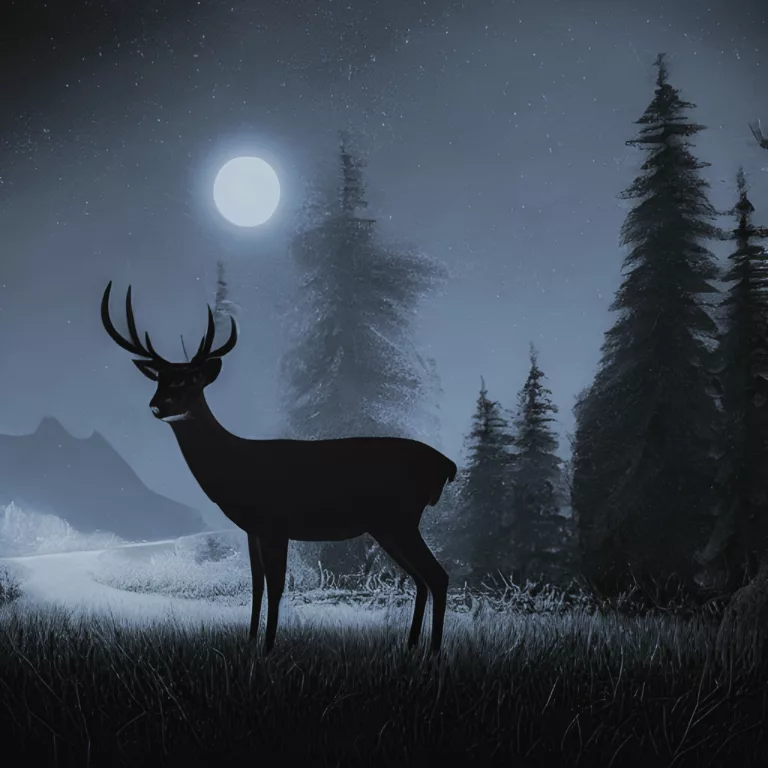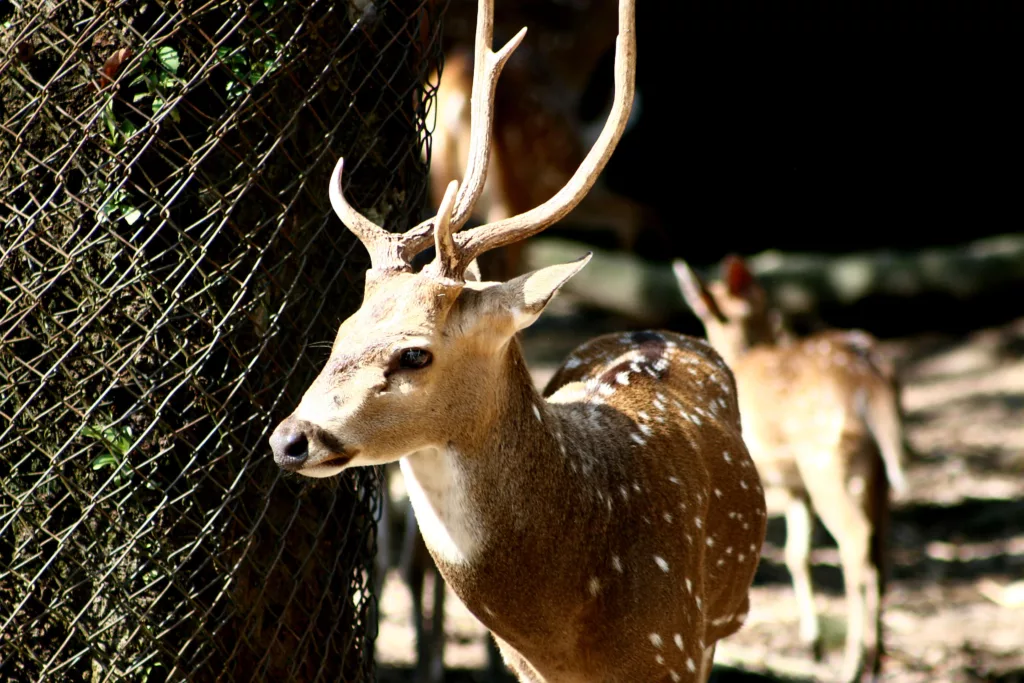This post may contain affiliate links. If you use these links to buy something we may earn a commission. Thanks.
Deer often browse gardens at night but several simple strategies can keep them out of yours. During dark hours everything is calm, quiet, and ordinary, but your yard doesn’t have to be so comforting.
Deer stay out of your yard day and night when your environment is ever-changing long term. Lights, motion-sensing sprinklers or alarms, lain chicken wire, Halloween decor with motion activation, and homemade scent-based deer repellents can be used on a rotation to keep deer away at night.
The trick for success at night is using a variety of tactics that stimulate multiple senses of deer.
We’ve been deterring deer day and night ever since we got here in 2020. My uncle Ron has been acquainted with deer all his life and also contributes insights from his experience on this topic.
Common mistakes, ideas, and learning experiences are shared in this post so you’ll be enabled to choose the most effective deterrent setups to prevent nighttime deer damage.
Related: Schedule to Keep Deer Out of The Garden Without A Fence
Avoid common nighttime deer deterrent mistakes

It’s common practice to simply set up these “scary eye” lights and be met with disappointment.
- The first mistake people make when using that as a nighttime deer deterrent is having only 1. You’ll need a minimum of 4 to face each direction.
- The second mistake is setting it and forgetting it forever. Using no other tactics.
Mind you, these may be entirely useless if a neighbor has already worn them out with your local deer.
Order deer-resistant shrubs, herbaceous perennials, bulbs, roses, and ground covers all in one place.
Keep deer afraid with lights
I was curious if lights would actually scare deer away, so not only did I look at what other people thought, I tested out some lights of our own. We have pathway lights, reflective tins, and those “scary eye” lights.
The lights that look like eyes can deter deer effectively at night by combining motion-activated noises with the motion of a 2-inch wide ribbon tied to a stick that can freely wave in front of the lit-up “eyes.”
Motion and sound combined with the sight of eyes looking my way, wouldn’t make me feel easy enough to dip my head back into the bushes for some snacks.
But after a month of seeing the same thing, I might poke around for some delights.
So the point is; to use multi-sensory tactics and rotate between different deterrent combinations often.
See: How To Create Motion with Household Items to Repel Deer
Pathway lights are not my first-choice investment for deer deterrent purposes, especially if used alone.
They’re too subtle and ambient and resemble street lights which deer have likely figured out to be harmless.
The reflective tins were great for making noise, and motion, and reflecting light from the moon. But again, like every tactic, these are short-lived and shouldn’t be used longer than 1-2 weeks.
Use physical barriers

What do deer not like to walk on?
Nighttime is a good time to use physical barriers to entry against deer. If not a fence, deer dislike walking on several kinds of surfaces.
Deer won’t walk on plumes of strong smells, unstable surfaces, or a tangled mess. Lain chicken wire, strong herb patches, or a wide patch of river rocks are examples of what deer don’t like to walk on. Deer can, however, jump across to the other side.
So rather than using these as a border, like a ‘fence’, they are temporary deterrents that keep deer at a distance from individual plants or from scoping general areas.
Lain chicken wire is the easiest non-permanent option. River rocks and herbs are permanent deer-resistant (not -proof) landscaping features.
If a fence is something you’re considering, see: 12 Ways To Save Money On (Effective) Deer Fencing
Do fake coyotes keep deer away?
Fake coyotes are a threatening shape for deer to see as real coyotes are very common predators. I wondered, however, if a fake coyote would actually be effective at keeping deer away as they make no noise or movement, and lack scent.
In general, fake coyotes keep deer away for a short time until they realize a still object isn’t a threat. On random intervals, remove and move the fake coyote around your property often to keep deer second-guessing the threatening-shaped object.
We have found that any odd-shaped object, such as a fake coyote or even a scarecrow, is effective at keeping deer away from the garden so long as they are visible, and aren’t stationary for too long.
You also need to eliminate it from the site altogether more often than you use it.
Combine these objects with randomized smells, noises, and movements.
Using smells to keep deer away at night
Deer rely on smell day and night to keep their distance from danger.
I wrote all about repelling deer with homemade products that will help keep deer off your plants at night.
See: 6 Recipes to Repel Deer by Smell & Taste + How To Use Them

Use noise to keep deer at a distance
Preventing deer from approaching your property with noise is a first-line defense to keeping them out of the garden at night.
Noise that scares deer doesn’t have to be disruptive to sleeping neighbors. It can simply be inconsistent rustling, chimes, pie tins, and more
Motion-activated noises are a second-line defense against deer that have already approached your garden.
Read more about using sound to scare deer away from your garden at night.
11 Easy Noises & Sounds To Scare Deer Away For Good
Recent Posts
There’s no shortage of full-sun ground covers for zone 4 climates! Each plant in this list can withstand the frigid temperatures and also enjoy the hot sun in summer. Full sun means that a plant...
There's no shortage of full sun ground covers, not even in zone 3! Zone 3 climates offer hot but short-lived summers and very cold winters. So each plant in this list can withstand the frigid...
